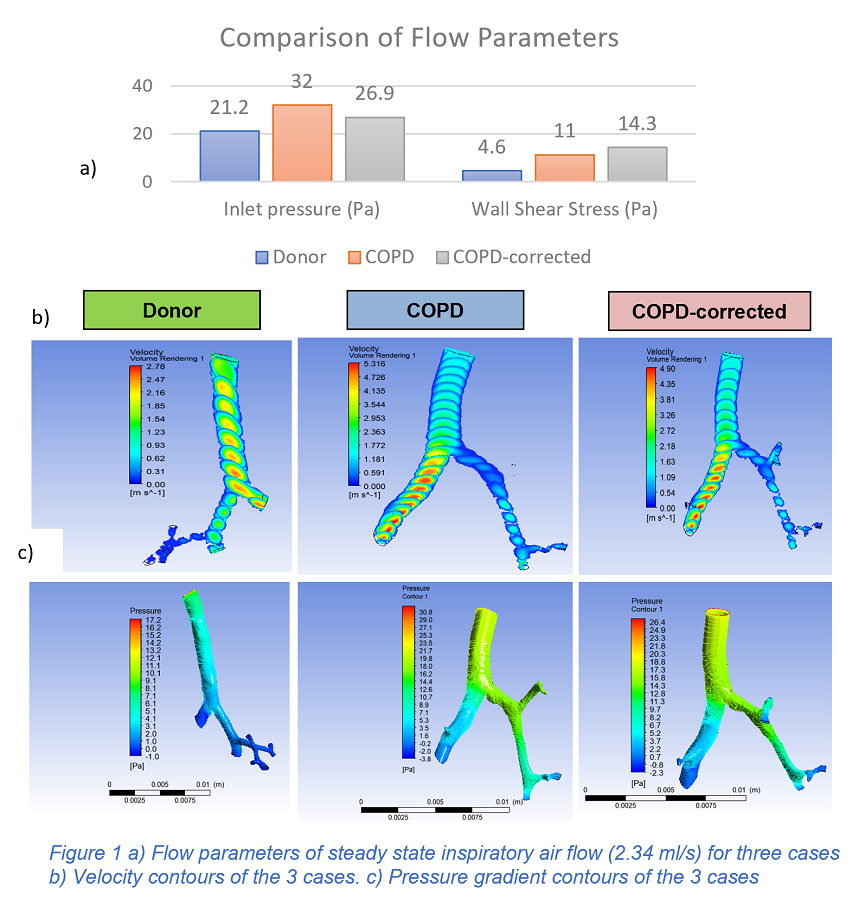Abstract
Small airway disease including obstruction is an important contributor to the decline in lung function observed in COPD. However, the mechanisms underlying small airway disease are not fully understood. We investigated the fluid dynamic alterations resulting from small airway deformation and obstruction in the lower airway zones up to the functional terminal bronchioles (TB) using computational fluid dynamics (CFD).
Small cylinders (1.4cm diameter) obtained from explanted donor (n=1) and COPD (n=1) lungs frozen at TLC were µCT scanned (resolution 10 µm). Samples were matched for number of generations and segments. Small airways were segmented and modeled for CFD simulation.
Under the same inlet flow rate and outlet pressure conditions, the COPD small airways showed a significantly higher magnitude of pressure drop and wall shear stress compared to the donor. Additionally, to understand the mechanism contributing to TB obstruction in the COPD sample, a new model was created by allowing flow out of the occlusion regions in order to simulate the flow before obstruction. A higher pressure drop (27%) was observed compared to donor, while the value of wall shear stress peaked.
Results demonstrate(fig1) that airflow in COPD experiences higher resistance due to deformations and occlusions downstream. The corrected model suggests that flow parameters, particularly wall shear stress, could be a contributing factor to TB obstruction in COPD.
